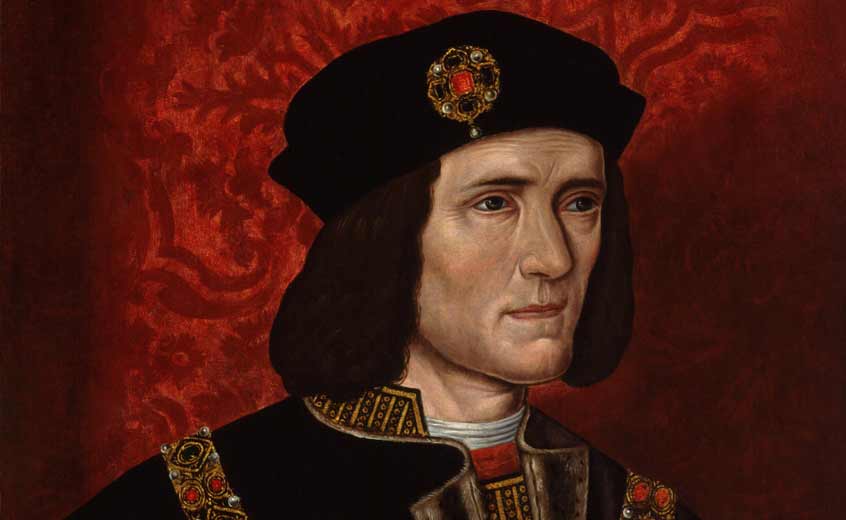The Remarkable Discovery of King Richard III: A Historical and Scientific Breakthrough
In a captivating intersection of history and science, the infamous King Richard III has re-emerged from the shadows of the past, leaving historians and royal enthusiasts reeling. This groundbreaking revelation, which surfaced more than 500 years after his untimely death at the Battle of Bosworth in 1485, not only confirms his identity through advanced DNA testing but also unravels long-held secrets surrounding the British monarchy. The implications of this discovery are profound, potentially altering our understanding of royal lineage and legitimacy. The journey of uncovering Richard III’s remains has changed the narrative of his life, marking a significant milestone in both archaeological and historical research.
The Archaeological Unveiling
The saga began in 2012 when a team of archaeologists from the University of Leicester embarked on an ambitious excavation project beneath a city parking lot, once the site of the medieval Grey Friars friary. The endeavor was not merely a search for Richard III but also an exploration of our medieval past. Here, they unearthed human remains believed to belong to Richard III. The skeletal evidence was compelling—battle injuries, pronounced spinal curvature indicative of scoliosis, and other physical traits aligned with contemporary descriptions of the notorious king, who is often unjustly vilified as a hunchbacked tyrant in Shakespearean lore. The excavation was the result of a concerted effort, involving historians, archaeologists, and even local enthusiasts, all united by a common goal: to solve the mystery of one of England’s most controversial monarchs.
Finding His Final Resting Place
For centuries, the precise burial site of Richard III remained a tantalizing mystery. Historical accounts suggested that following the Wars of the Roses, his body was hastily interred at Grey Friars, which eventually succumbed to dissolution and destruction during the Reformation. Various legends emerged over the years, claiming that his remains had been lost or even discarded, possibly tossed into the nearby River Soar. The discovery of the skeleton, with its spinal curvature matching historical observations, provided a definitive link to Richard’s identity, although it also raised questions about the nature of his physical appearance, countering exaggerated claims of grotesque deformity that have persisted throughout history. Excavation efforts included the careful documentation of artifacts found alongside the remains, providing further context about the burial practices of the time.Decoding the DNA
To solidify the findings, scientists employed meticulous DNA analysis. Both mitochondrial DNA (mtDNA) and Y chromosome analysis were utilized to trace Richard’s lineage. The mtDNA, inherited maternally, allowed researchers to connect Richard to his sister, Anne of York, through living descendants who provided reference samples. Concurrently, the Y chromosome—passed down paternally—aimed to confirm the male line of the Plantagenets, ultimately linking Richard to Edward III. This scientific endeavor not only underscored the advancements in genetic testing but also highlighted the delicate nature of working with ancient remains. The extraction process was intricate, necessitating extreme care to prevent contamination, showcasing the complexity of modern archaeology as it intersects with genetic science.Astonishing Revelations from the Analysis
The results from the DNA tests confirmed the identity of the skeleton as Richard III but also unveiled a shocking twist. The Y chromosome analysis revealed a “false paternity event” in the male line of the Plantagenets, suggesting that at some point between Edward III and Richard’s descendants, there was an offspring whose paternity was not as recorded in historical records. This discovery ignited serious debate among historians regarding the legitimacy of royal claims and the implications this has on the understanding of succession and power dynamics within the monarchy. The revelations prompted scholars to re-evaluate established historical narratives, questioning the very foundations of royal legitimacy. What if Richard’s claim to the throne had been weakened by knowledge of such revelations? Such questions add layers of complexity to an already intricate historical tapestry.Humanizing the King
Further analyses have provided a richer, more nuanced portrait of Richard III. Isotopic studies illustrated a shift from a modest childhood diet to one filled with luxurious foods in adulthood, reflecting his royal status and the societal changes of the time. Advanced facial reconstruction techniques, utilizing CT scans of the skull, resurrected Richard’s image, revealing features such as a narrow jawline and high cheekbones, which contradict the dark villainous character often depicted in literature. The reconstructed likeness was widely shared in media, sparking a renewed public interest in his story. Moreover, his skeletal remains bore signs of fierce battle injuries, including skull fractures, suggesting not only his bravery but also posthumous dishonor, consistent with the historical narrative of his life and death. These humanizing aspects of Richard III challenge the villainous archetype and foster a more empathetic understanding of his life and reign.The Broader Impact: A Shift in Historical Understanding
The unearthing of Richard III’s remains and the subsequent DNA revelations have sent shockwaves throughout the fields of historical research and genealogical studies. Museums, academic institutions, and even Leicester Cathedral, now a pilgrimage site for royal aficionados, celebrate this momentous find. The implications of this discovery have sparked a reevaluation of historical narratives and royal family trees that have stood for centuries. The ethical questions surrounding the nature of royal legitimacy—whether it is determined by bloodline, actions, or legacy—now loom larger than ever. Richard III’s saga, while confirmed, carries complexities that beckon a deeper investigation into the very fabric of medieval England, monarchy, and the intricate web of dynastic power.In conclusion, the story of Richard III is not merely a tale of a king unearthed but a profound reminder of the fragility of history and the continual quest for truth. This discovery highlights the dynamic nature of historical interpretation, revealing how new evidence can reshape our understanding of the past. The past, while often sealed in stone and parchment, can be rewritten through the lens of modern science, illuminating the lives of those who have long been cast in shadows. The revelations surrounding Richard III serve as a testament to the enduring nature of human inquiry and the depths of our shared heritage, urging us to consider the many facets of truth that lie beneath the surface. As we continue to explore our history, Richard III’s story encourages us to embrace both the known and the unknown, reaffirming our connection to the past while paving the way for future discoveries.

















